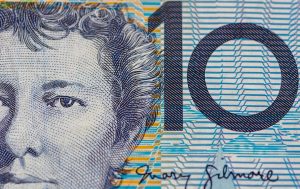Market Overview
The U.S. dollar is heading towards its biggest weekly decline against the euro in two-and-a-half months, as signs of cooling inflation and a softening U.S. economy bolster prospects for rate cuts. Concurrently, major currencies such as the euro, Australian dollar, and New Zealand dollar have experienced notable gains against the dollar, driven by various economic developments and data releases.
Dollar and Euro Movements
EUR/USD:
- The euro (EUR/USD) has risen 0.8% against the dollar this week, breaking above the resistance level of $1.0855 and trading as high as $1.0895. The pair was last at $1.0856.
- April’s U.S. inflation data met expectations but was lower than the previous month, increasing confidence that the Federal Reserve will cut interest rates in September and again in December.
- U.S. retail sales were flat in April, and manufacturing output unexpectedly fell, contributing to the dollar’s weakness.
- Despite market pricing for European rate cuts beginning in June, Germany’s economy grew more than expected last quarter, and investor morale reached a two-year high.
Other Major Currency Movements
AUD/USD and NZD/USD:
- The Australian dollar (AUD/USD) is trading at $0.6663, having been knocked from a four-month high due to a surprise rise in unemployment figures, which seemed to reduce the likelihood of another rate hike. Disappointing Chinese data also contributed to the Aussie’s decline.
- The New Zealand dollar (NZD/USD) is up 1.5% for the week, eyeing its best week of the year, though it was slightly down on Friday at $0.6111 ahead of next week’s central bank meeting, where the official cash rate is expected to remain at 5.5%.
GBP/USD:
- Sterling (GBP/USD) is up 1% this week, last trading at $1.2655.
USD/JPY:
- The Japanese yen (USD/JPY) has been broadly steady at 155.78. Despite expectations for the Bank of Japan (BOJ) to move towards policy normalization, the consensus in Tokyo is for a cautious and gradual approach. The yen weakened toward 156 per dollar after the BOJ maintained its bond-buying amounts, contrary to some expectations for a reduction.
Economic Data and Central Bank Actions
U.S. Economic Data:
- U.S. retail sales were flat in April, indicating weaker consumer spending. Manufacturing output also fell unexpectedly.
- April’s annual U.S. inflation numbers met expectations but were lower than the previous month, reinforcing the outlook for Fed rate cuts in September and December.
European Data:
- Germany’s economy grew more than expected last quarter, and investor morale is at a two-year high, providing support to the euro.
Australian and New Zealand Data:
- Australia’s unemployment figures unexpectedly rose, curtailing prospects for further rate hikes.
- New Zealand’s central bank is expected to keep the official cash rate steady at 5.5% in the upcoming meeting.
Japanese Data and BOJ Actions:
- Japan’s Q1 GDP contracted at an annualized rate of 2%, worse than market expectations for a 1.5% contraction. Private consumption fell for the fourth consecutive quarter.
- The BOJ announced it will continue purchasing 425 billion yen in five- to 10-year Japanese government bonds, leading to a decline in yields and slight depreciation of the yen.
Cryptocurrency Movements
Bitcoin (BTC/USD):
- Bitcoin is up 7% this week, last trading at $65,519.
Conclusion
The U.S. dollar is poised for a significant weekly decline against major currencies due to cooling inflation and signs of economic slowdown, raising expectations for Federal Reserve rate cuts later this year. Meanwhile, the euro, Australian dollar, and New Zealand dollar have made notable gains, supported by stronger economic data and central bank actions. The Japanese yen remains under pressure amid BOJ’s continued bond purchases and weaker-than-expected economic performance.





